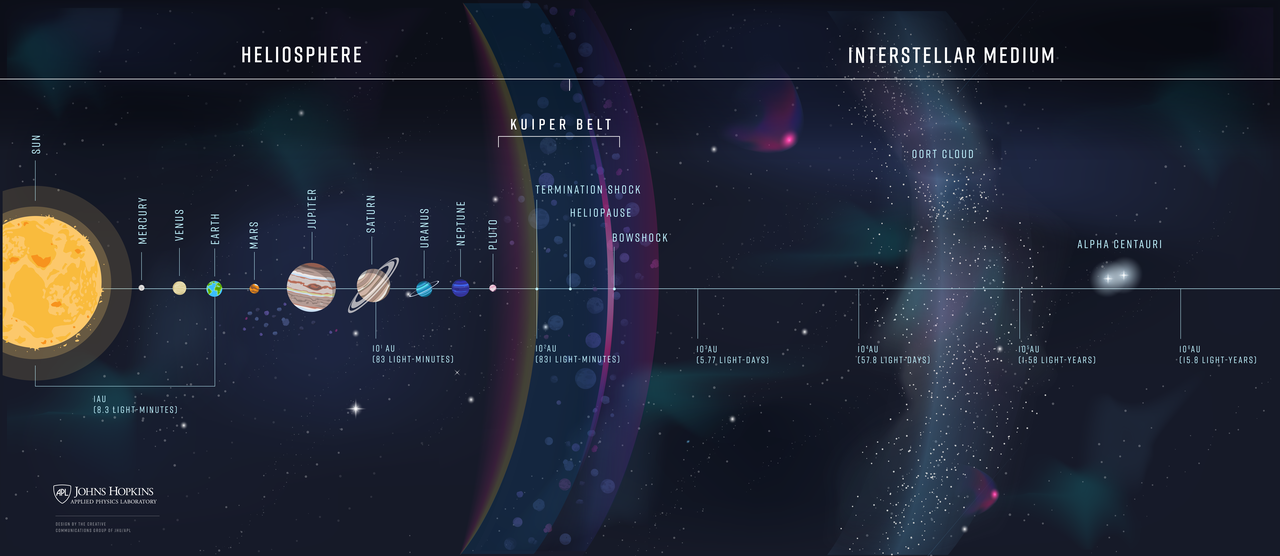Apr 27 2021
Scientists commemorated the entry of the 40-years-old Voyager 1 and Voyager 2 spacecraft into interstellar space in 2012 and 2018, respectively.
 A schematic showing the heliosphere and the interstellar medium. Image Credit: European Geosciences Union.
A schematic showing the heliosphere and the interstellar medium. Image Credit: European Geosciences Union.
To reach the boundary of the heliosphere, the bubble that blankets the solar system that is impacted by the solar wind, these undaunted spacecraft had already traveled 120 times the distance from the Earth to the Sun.
Although the Voyager spacecrafts identified the edge of the bubble, they left scientists with several questions on how the Sun interacts with the local interstellar medium. Both the spacecrafts offered very little data, leaving major gaps in the understanding of this region.
Now, NASA and its collaborators are planning for the next spacecraft, named the Interstellar Probe, to travel even deeper into interstellar space—1,000 astronomical units (AU) away from the sun, with the aim of gaining more insights about how the home heliosphere formed and evolved.
The Interstellar Probe will go to the unknown local interstellar space, where humanity has never reached before. For the first time, we will take a picture of our vast heliosphere from the outside to see what our solar system home looks like.
Elena Provornikova, Interstellar Probe Heliophysics Lead, Johns Hopkins Applied Physics Lab, Maryland
At the European Geosciences Union (EGU) General Assembly 2021, Provornikova and her team will debate about the heliophysics science opportunities for the mission.
The APL-led research group includes about 500 engineers, scientists, and enthusiasts—formal and informal—from across the globe and has been investigating the kinds of investigations the mission should plan for.
There are truly outstanding science opportunities that span heliophysics, planetary science, and astrophysics.
Elena Provornikova, Interstellar Probe Heliophysics Lead, Johns Hopkins Applied Physics Lab, Maryland
The group aims to solve the following mysteries through the mission: the interaction of the Sun’s plasma with interstellar gas to form the heliosphere; what lies beyond the heliosphere; and what the heliosphere even looks like.
The goal of the mission is to capture “images” of the heliosphere with the help of energetic neutral atoms, and perhaps even “observe extragalactic background light from the early times of our galaxy formation—something that can’t be seen from Earth,” added Provornikova.
Researchers also look forward to gaining more insights about how the Sun interacts with the local galaxy, which might eventually provide hints on how other stars in the galaxy interact with their interstellar neighborhoods, she noted.
The heliosphere is also crucial as it safeguards the solar system from high-energy galactic cosmic rays. According to Provornikova, the Sun moves around in the Milky Way galaxy, traveling through various regions in interstellar space.
The sun now acts as the so-called Local Interstellar Cloud. However, recent research indicates that the sun may be traveling toward the edge of the cloud, following which it would enter the next interstellar space region—on which there is no knowledge.
A change such as this might make the heliosphere grow smaller or larger, or alter the amount of galactic cosmic rays that enter and add to the background radiation level at Earth, she explained.
This is the final year of a four-year “pragmatic concept study,” where the researchers have been exploring what science could be achieved through this mission. They will submit a report to NASA at the end of the year, outlining potential science, sample instrument payloads, and sample spacecraft and trajectory designs for the mission.
Our approach is to lay out the menu of what can be done in such a space mission.
Elena Provornikova, Interstellar Probe Heliophysics Lead, Johns Hopkins Applied Physics Lab, Maryland
The mission could be introduced in the early 2030s and would take nearly 15 years to reach the heliosphere boundary—a pace that is faster than the Voyager spacecrafts that took 35 years to reach there. The existing design of the mission is planned to last for five decades or beyond.
Journal Reference:
Provornikova, E., et al. (2020) Unique heliophysics science opportunities along the Interstellar Probe journey up to 1000 AU from the Sun. EGU General Assembly 2021. doi.org/10.5194/egusphere-egu21-10504.